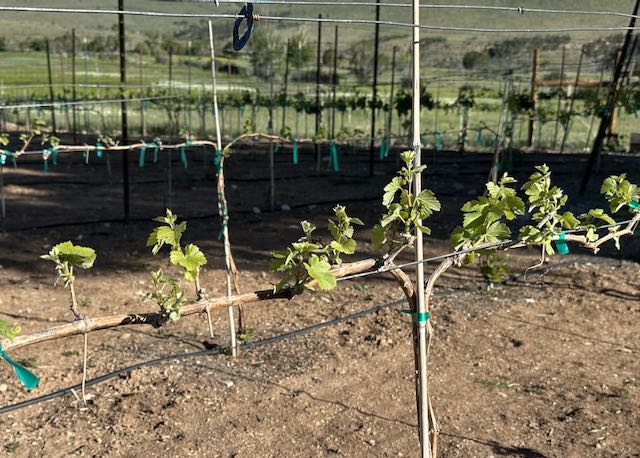Spring in the Vineyard Brings Hope and Rebirth (WineEnthusiast)

For winemakers, spring marks the shift from winter dormancy to reawakening. In the vineyard, the groundwork for harvest is laid and important transitions occur, from de-acclimation, bud break and flowering, to cover crop, vine replanting and more.
Spring isn’t without its hazards, nor immune to the changing climate. Nevertheless, “spring is made of solid, 14-karat gratitude, the reward for the long wait,” as author Barbara Kingsolver wrote in Animal, Vegetable, Miracle: A Year of Food Life.
Live of the vine
As soil temperatures warm, sap begins coursing through vines. This triggers a sequence of events that eventually results in the appearance of fruit on the vines.
Bud break is the first stage of the vine’s annual cycle. New green growths appear, fed by water and stored nutrients. Small, fuzzy (or, as the pros say, woolly) nubs sprout. As temperatures increase, tiny leaves, tendrils and miniature flower clusters burst through the bud.
“Every day is a step towards the next vintage,” says Lawrence Cronin, winemaker for Tenuta di Arceno in Tuscany.
Grape flowers arrive typically in late spring, roughly from 40 to 80 days after bud break. Vines are self-fruitful, which means that they self-pollinate without bees or wind. Each flower bears a single grape that protects the plant’s evolutionary insurance policy, its seeds.
“This is a very delicate time that is easily impacted by the weather,” says Cronin. In Castelnuovo Berardenga in Chianti Classico, the ideal conditions are from 59°F to 68°F, he says, without rain and little or no breeze.
“For the weather to stay like this consistently for two weeks would be a dream,” he says. “Any rain or wind during this time can hamper flowering, disrupt pollination and lower the potential yield.”
Shatter, or coulure, occurs when the grape cluster doesn’t fully develop. Reasons include strong winds knocking flowers off or disrupting pollination, or the small berries falling off before developing.
Shatter isn’t always bad. A “sparse cluster” can help a grape like Sangiovese, Cronin says, because it has tight bunches that can impede airflow and lead to botrytis. Still, “everything in moderation,” he says.
Vineyard Management
Viticulturalists and winemakers rejoice when the weather turns warm.
“Spring is my favorite time of year,” says Emily Faulconer, agricultural engineer and chief winemaker for Viña Carmen in Chile. “Sunny days, the Andes covered in snow, the start of new life. Pleasant weather, the cover crops growing, butterflies. I simply love it.”
Come spring, Faulconer and her team tackle planning and maintenance projects in the vineyard like planting cover crops, removing extraneous shoots and lifting new vine growth.
“At our Alto Jahuel estate, we plant cover crops between rows and apply hummus and mulch directly on the vines,” she says. She plants native flora as cover crops because it’s familiar to the local fauna. They have evolved into a symbiotic, living ecosystem. “It is impossible to achieve the expression of the terroir if there is no life in the vineyard,” she says.

